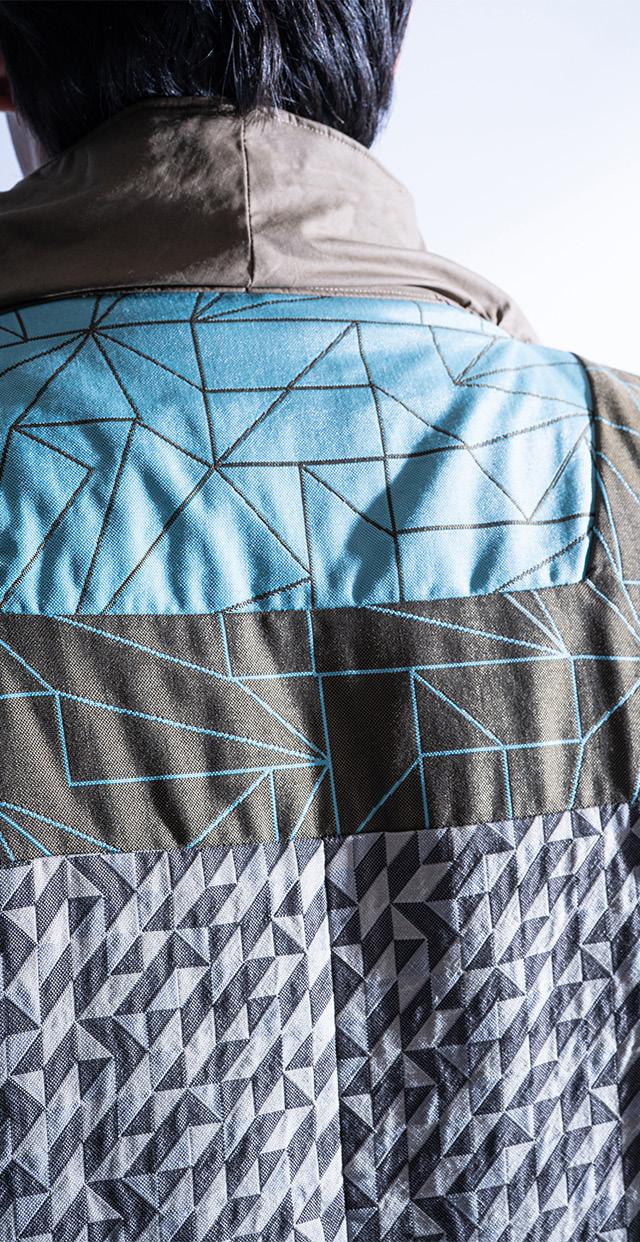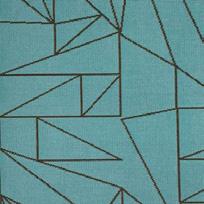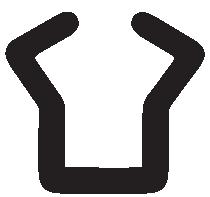




Inspired by tradition and designed for the contemporary, VISIBLE is an 11-piece resort collection that explores the Filipino culture and its multicultural influences in the context of global fashion.
True to the designer’s signature, the collection is shaped through a harmonious blend of contrasts, emulating the multiculturalism from which it was inspired. This collection celebrates the Filipino weaving heritage by using fabrics such as, Pinilian, Tiniri, Binakol and Hablon, which were designed and handwoven by various indigenous weaving communities in the Philippines, in combination with locally sourced deadstock fabrics made from natural or recycled fibres and upholstery fabrics. The silhouettes are clean and tailored but adorned with elaborate textures in unconventional materials and customised fabric manipulation techniques. The colours are warm and saturated and the prints are bold and geometric, a reflection of the vibrant Filipino culture .
VISIBLE is for spirited, confident and unique individuals with a deep appreciation for craftsmanship and a penchant for vibrant but timeless forms of self-expression.
The Filipino culture, even pre-colonisation period, has always been diverse and hybrid in nature (Balbas 2020; Viray 1968 in Cruz 2019). Philippines is an archipelago composed of different islands and different groups with its own culture and identity in every island (Balbas 2020). This is why Filipino culture and identity can be difficult to define collectively (Balbas 2020) and even a Filipino can feel alienated within its own culture (Cruz 2019). After being colonised by Spain from 1571-1896, Japan from 1942-1945 and United States of America from 1898-1942 then again in 1945-1846 (Balbas 2020; Cruz 2019; Herrera 2015), the influences of these groups further contributed to an already hybrid culture -- blurring Filipino identity even more (Balbas 2020). This rich cultural diversity, in addition to relations with neighbouring cultures and colonial influences, gave birth to a wide variety of Filipino indigenous textiles (Araneta and Lim 2014; Moya 2021) and the evolution of Filipino clothing styles (Philippine Folklife Museum Foundation 2000).
Textile arts in the Philippines is rooted in tradition (Araneta & Lim 2014) and beliefs passed on by ancestors (Moya 2021). The Philippine weaving culture dates back to the 13th century, using materials like cotton, abaca and pineapple. Handloom weaving is believed to be a cultural and artistic practice associated with indigenous peoples’ link to spirits (Moya 2021), which may also be rooted in the fact that the materials used are also taken from natural materials (Araneta & Lim 2014).
Clothing and fashion are signifiers of identity and markers of cultural beliefs and historical change (Narra Studio n.d.). Prior to colonisation, Filipino indigenous communities have their own unique clothing traditions. Due to colonial influences, Filipino clothing had evolved through time, from its silhouettes and materials to the number of pieces and how it is worn, making Filipino fashion more diverse (Dowthwaite 2022).
 T’Boli woman from Mindanao, Robert Harding
A Filipino and a Spaniard in the Spanish Colonial army in 1897, Arnaldo Dumindin
T’Boli woman from Mindanao, Robert Harding
A Filipino and a Spaniard in the Spanish Colonial army in 1897, Arnaldo Dumindin
“Design produces culture and culture produces design.” (RodríguezRivera 2020)



Silk Abaca in natural (50% silk + 50% abaca; handwoven)
“Tiniri” in brown and red (50% cotton, 50% polyester; handwoven)
Coated cotton (100% deadstock)
“Pinilian” in red (50% cotton, 50% polyester; handwoven)
“Pinilian” in red, yellow and white (50% cotton, 50% polyester; handwoven)
Geometric
teal, red (Recycled + cotton deadstock)
“Hablon” in black and gray (50% cotton, 50% polyester; handwoven)
Striped fabric in brown and light pink (Wool + viscose; deadstock)
“Kintsugi” design in (100%
cotton in brown (100% cotton; deadstock)
Waterproof polyester in olive (100% polyester; deadstock)
Brushed twill in red (100% cotton; deadstock)
Geometric jacquard in red and white (Recycled polyester cotton + elastane; deadstock)
Geometric print in olive, blue and red (Recycled polyester + polyester + elastane; deadstock)

Zero-waste weave in light blue, burgundy and light tan (cotton + polyester; handwoven using scraps)
“Kintsugi” original print in blue, tan and white (100% cotton)












JARIE JACKET
Cropped jacket with high neck collar, CF zip, double layered sleeves and customised fringe
100% cotton brushed twill in red


60% cotton, 40% polyester “Pinilian” in red








JANIS TOP
100% cotton webbing tape in red







Bandeau top with CB zip


60% cotton, 40% polyester “Tiniri” in brown and red
Wide leg pants with straight waistband, CB invisible zip and righthand side overlay
37% Recycled polyester, 61% polyester, 2% elastane geometric print fabric in olive, blue and red (reverse side is used for overlay)




Reversible, knee-length, double breasted coat with high neck funnel collar, snap fastenings, cap sleeves and side seam pockets

100% polyofelin “Quiz” in sand
100% polyofelin in “Zip” (reverse side used in back yoke)


100% coated cotton in brown


Cropped ankle pants with straight waistband, fly front button fastening, side seam and single welt back pockets
Wool and viscose in brown with light pink stripes
















Long shirt with high neck funnel collar, CF concealed button placket, front and back yoke, ontrasting overlay and exaggerated cuff sleeve
Wool and viscose in brown with light pink stripes



100% coated cotton in brown 100% cotton “Kintsugi” original print design in blue, tan and white







Cape jacket with high neck collar, CF zip and customised fringe
Recycled polyester, cotton and elastane geometric jacquard fabric in teal, red and white







Offcuts faux leather strips in brown, deep burgundy and deep purple


Shorts with contrasting side front and side back panels, straight waistband, CB invisible zip
100% cotton brushed twill in red
60% cotton, 40% polyester “Pinilian” in red











Mini dress with boat neckline, open sleeve, CB zip, pintucks overlay and fringe detail
50% abaca, 50% silk in natural


60% cotton, 40% polyester
“Pinilian” in red, yellow and white














Double-breasted vest with high neck funnel collar, front and back yoke, snap fastenings and fringed cap sleeves






Cotton and polyester zerowaste weave in light blue, burgundy and light tan


Recycled polyester, cotton and elastane geometric jacquard fabric in teal, red and white


Knee-length skirt with straight waistband, elongated CF and CB panels, CB invisible zip, side seam pockets, left hand side overlay and front zip detail
Waterproof polyester in olive
60% cotton, 40% polyester Hablon in black and gray


Fashion, Textile and Print Designer Patternmaker and Garment Technician Fashion and Technical illustrator www.jana-kathryn.com @heyjanakathryn



All content is the original work of JANA PONDEVIDA including fashion design, original print design, collage artwork, illustration, textile manipulation and styling.
Photography by Sharif Chow Hair and Make-up by Cameron Jane Academy and Eliza Sensi
